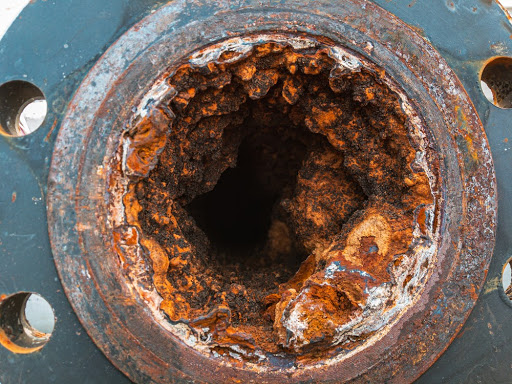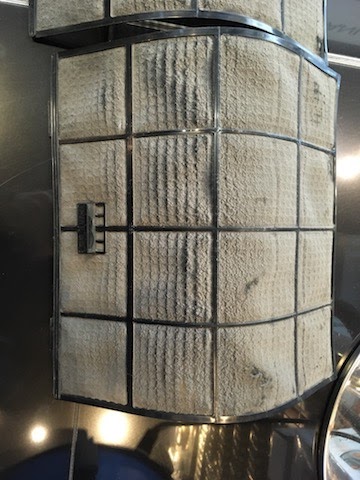Obstruction is the total or partial impediment of the passage of a material or fluid, be it air, steam, gas, water, oil, refrigerant or any other. The obstruction can be in a closed material or fluid passage (valves, pipes, ducts, chimneys) as in an open material or fluid passage (channels, filters).
The obstruction can also be the total or partial impediment of the operation of an asset or component that moves to perform its function (actuators, conveyors, bridge cranes, wheels).

Causes
The most common direct causes of obstruction detectable by visual inspection are:
- Material build-up on clogged component.
- Corrosion.
- Malfunction of valves, steam traps, actuators or regulation systems.
- Bad installation of elements close to the asset.
- Presence of a part or element external to the asset.
- Freezing of the working fluid.

Cases
Through visual inspections the most common cases of obstruction that are diagnosed are:
- Air filters: inlet to ventilation ducts, cooling of electric motors, air inlet in internal combustion engines, the inlet of compressors.
- Lubricating oil filters: generally requires manual removal of the filter for verification.
- Hoses: they present a visible discontinuity either due to deformation by an external object or deformation due to a change in the trajectory of the hose with curvature less than the admissible one.
- Pipes: it is diagnosed by process parameters, abnormal noise, or by visible deformation due to a blow or deformation.
- Ducts: it is diagnosed by process parameters, abnormal noise, or by visible deformation due to a blow or deformation.
- Valves: diagnosed by process parameters or abnormal noise.
- Steam traps: diagnosed by process parameters or abnormal noise.
Diagnosis
Detection of obstruction in visual inspections is by direct observation, reading of parameters (pressure, flow, temperature, electrical current), abnormal noises, or any combination of these criteria.
Points to consider:
- Sometimes the clog can be perceived as dirt. However, as long as there is an obstruction of material, fluid, or moving part, an obstruction must be diagnosed.
- If the obstruction has been diagnosed from process parameters or normal noise, it is advisable to recommend some additional inspection or performance testing to check the obstruction. In such cases, abnormal process parameters, abnormal noise, or both must be diagnosed. The obstruction must be diagnosed until there is evidence of it.
- The obstruction may be present with another fault that is either a cause or consequence of the obstruction. For example, an obstruction can be diagnosed in conjunction with abnormal process parameters, abnormal noise, or structural problems.
Special emphasis is required in cases where emergency or fire systems are inspected. Visual inspections on such systems are normally done without putting the assets into operation. Detection of obstructions in these cases is extremely important and can be done without having full evidence. Examples of inspection points in this context are fire hoses, shafts, and couplings of emergency electric generators and fire pumps.
